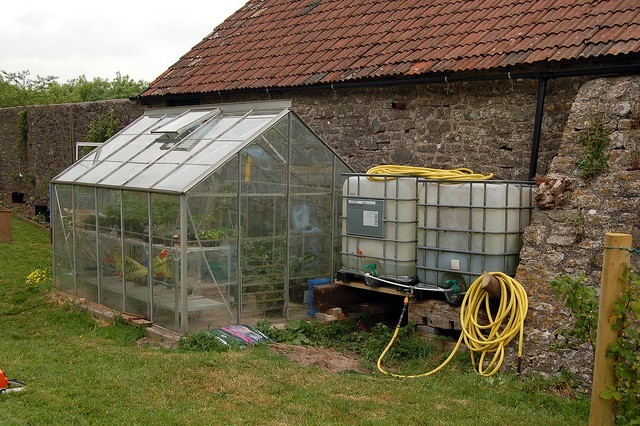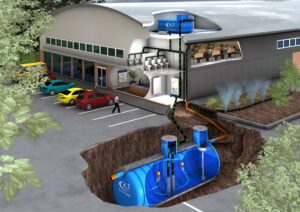WHAT IS RAINWATER COLLECTION. Water is, without a doubt, the main natural resource you need for your domestic use. It’s glamorous to have a stockpile of weapons, gold, and jewelry, but without water, life could be unbearable.
The best and cheapest alternative to traditional water supply systems is rainwater harvesting. However, in order to harvest rainwater, you will need to install a rainwater harvesting system.
We all take water for granted. It’s one of those natural resources that most people don’t think about much, but to keep enjoying that free water supply for many years to come, changes have to be made.
Rainwater harvesting returns the water supply to normal levels. It is the collection and storage of water from the surfaces on which the rain has fallen.
In a normal scenario, rainwater is collected from rooftop buildings and then stored inside a special tank. Not only does it help you conserve water, it can also help you save energy by avoiding the need to maintain a centralized water system.
If you are concerned that your ceiling is dirty, put that fear aside. There are many different tools available to help you easily clean your roof. Hiring a roofer to provide a cleaning is another option available to you.
People are forced to collect rainwater due to a wide range of factors, including unpredictable weather patterns, rising infrastructure costs, and exploding water use.
Additionally, most businesses and households are looking to adopt green practices to become efficient and much more self-sufficient. In this case, rainwater is the obvious choice because it is the easiest and fastest method of minimizing water consumption.
Most homeowners who have adopted this practice have reported a reduction of around 50% in their water bills. In addition to helping reduce water bills, rainwater harvesting helps the environment a lot.
BENEFITS OF RAINWATER COLLECTION
Collecting rainwater and collecting it for everyday use has a number of interesting benefits.
PROVIDES A RESERVE WATER SOURCE
There are many uncertainties in water supply systems. Droughts can cause water shortages. Destruction of water supply systems can occur in specific locations. Major repairs and maintenance at water companies occur sporadically. All of these variables lead to unavailability of water in your home. Therefore, installing a rainwater harvesting system is the best course of action to continue enjoying the water supply in the event of any of the above variables.
This includes doing laundry, washing dishes, and more. This would prevent the depletion of groundwater and increase the water table.
ECOLOGICAL BENEFIT
The ecological benefits of rainwater harvesting are immense. An activity like flushing the toilet, for example, is attributed to about 35% of household water use. For companies, especially hospitality establishments that host a large number of guests in the same place, they need a lot of water to satisfy customers. Rainwater harvesting will simply help fill this gap.
The ecological benefit of rainwater harvesting systems is that there will be a significant reduction in the amount of water used from the network. This will help minimize the possibility of rivers running dry. Another great ecological benefit of rainwater harvesting systems is that they help reduce the load on drainage systems, minimizing the impacts of flooding by channeling runoff water into large tanks for recycling.
EASY TO MAINTAIN RAINWATER COLLECTION
Rainwater harvesting systems are cost-effective, provide high-quality water, and reduce reliance on wells. Surplus rainwater can also be used to recharge the groundwater aquifer using artificial recharge techniques.
REDUCE EROSION AND FLOOD AROUND BUILDINGS
Most buildings that use rainwater catchment systems have a catchment area built into the top of the roof, which is capable of collecting large amounts of water in the event of a rainstorm. It helps reduce soil erosion, as by capturing rainwater, the flow of rainwater is reduced, which can also prevent urban flooding. If the water was not collected efficiently, it could have caused severe soil erosion and flooding around the house.
REQUIRES LOW INITIAL CAPITAL INVESTMENT FOR RAINWATER COLLECTION
The installation of the rainwater harvesting system is not that expensive, it is also a one-time installation, and that’s it. The only routine maintenance required is tank cleaning. You will likely hire a skilled technician to install the system for you. The technician will not quote a high price, and will also offer you free advice on the best rainwater system that he can buy. He will also help you when you buy the system to make sure you get the best quality rainwater harvesting system. If we add up the total cost of installing the system, we will realize that it is really manageable.
Once you start using the rainwater you will also appreciate a reduced amount of water consumption in the home hence all your utility bills will be greatly reduced. How awesome would it be to cut up to 50-60% off your water bill every month? There are no complaints about having extra money in your pocket each month.
Starbucks Green Cup Initiative Starbucks Green Cup Initiative
RAINWATER COLLECTION METHODS
It is easy to collect rainwater from the roofs of buildings and from many other sources. As long as you are ready and equipped with a couple of different items, you have everything you need to start harvesting rainwater and enjoy naturally delicious, clean and useful water. Rainwater harvesting systems can be purchased complete at various home improvement stores. The cost of these systems will vary.

Take a look at some of the rainwater harvesting techniques for yourself.
RAIN WATER BARRELS
Barrel installation is the cheapest and easiest way to start collecting rainwater in your home. A barrel is simply installed under the gutter so that the rain that falls on the roof is channeled into the barrel. Usually the container will consist of a spigot under it to allow you to draw water and water your garden. Better yet, a hose can be attached to the faucet or to a drip irrigation system.
Barrels are advantageous because they can be obtained effortlessly, either recycled or new. If you go for the recycled keg, make sure you know exactly what the keg was used for to ensure that no chemical residue is left inside. If you reside in an area infested with mosquitoes, be sure to include a lid for your barrel to mitigate the possibility of mosquitoes breeding in your barrel.
When the winter month hits, it is advisable to unplug the barrel to prevent freezing and cracking. The biggest downside to rainwater barrels is that they have a limited capacity, which means prolonged rains would result in flooding, the barrels are easy to use, and available for purchase in many places, all at reasonable prices.
DRY SYSTEM
This is a well known method of collecting rainwater. It is basically an improvement on the rainwater barrel technique in terms of size. A few steps from the property is a larger water storage container. This container provides a much higher storage capacity compared to the keg. The gutter is diverted to channel the water into the tank. The name “dry” comes from the fact that the collection tube dries out after any rainy day because it is supposed to empty at the top of the tank. The dry system is ideal for areas with large storms.
WET SYSTEM
This is because the collection pipes are always full of water, since they are located underground. Here, numerous collection pipes connect to multiple downspouts in the building and are funneled to empty into the underground storage tank. When it is not raining, the level remains constant and the pipes are always full. Due to the permanent availability of water inside the pipes, it is recommended that they be watertight to mitigate the possibility of leaks in the ground. Underground piping makes it relatively expensive to install compared to dry and wet systems.
GREEN ROOF
This rainwater harvesting method literally cuts out the middle man. But you have to put a coating to protect your roof and include a drainage system to take care of the drains. Installing garden beds with plants that require little maintenance is the sure way to maximize the productive space of your plot and take advantage of the rainwater where it falls. Also, installing a green roof will add insulation to your home and protect your roof from damage.
If you prefer, you can create your own barrels for collecting rainwater. Only a few components such as the catchment area, transport system, first rain separator, filter unit, storage, delivery system, usage, refill, and supplies are required to create your own barrel.
You will need to follow the instructions included in your rainwater collection kit to set things up and start collecting rainwater. For a DIY job, there are many resources available on the Internet at no cost.
Conclusion
Rainwater harvesting is something that thousands of families participate in around the world, and you could be the next to enjoy the multitude of benefits that rainwater harvesting offers. It’s an easy, straightforward, and worthwhile process, so just take a look at rainwater harvesting and its benefits for your home. You can discover many surprises and things that you did not know on the way!





